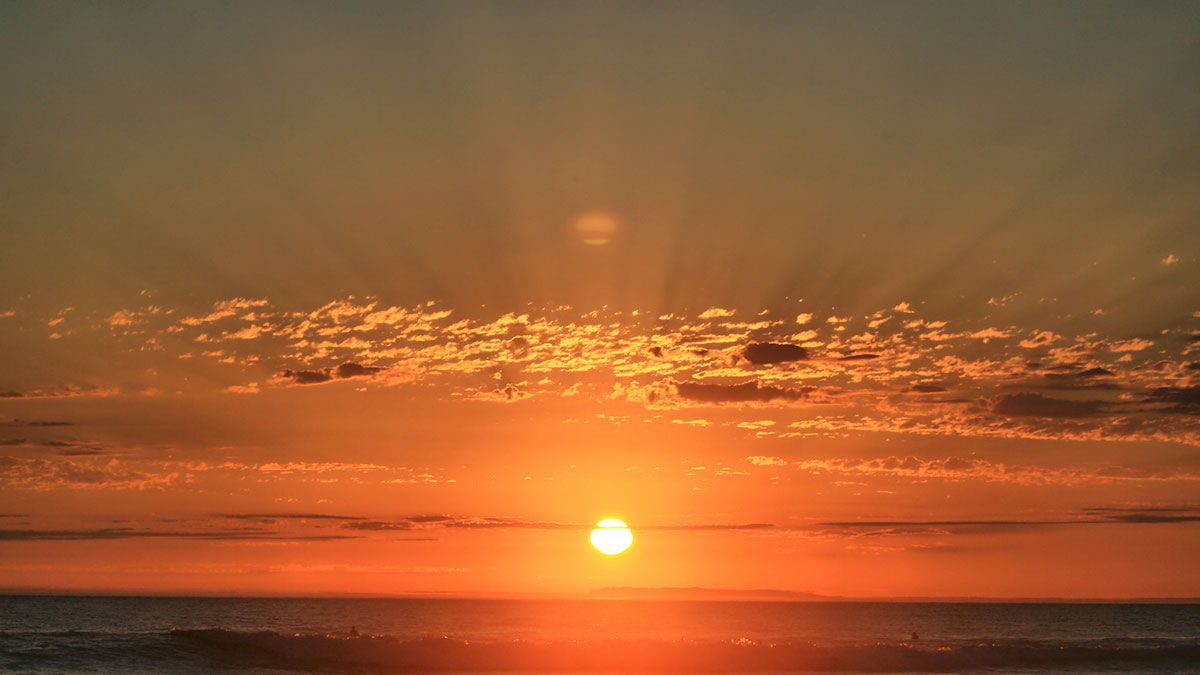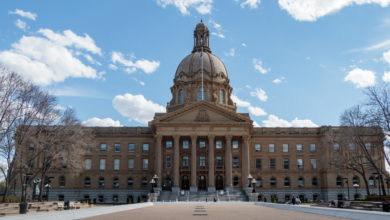Leading U of A dermatologist’s 101 on sunscreen
 Supplied - Brocken Inaglory
Supplied - Brocken InagloryEven Jaggi Rao gets sunburns.
Rao is a clinical professor of medicine at the University of Alberta, the program director for its Dermatology Residence program, 2011’s Canadian Dermatology Association’s Teacher of the Year recipient and founder of the Alberta DermaSurgery Centre.
But while vacationing on a cruise in the sunny Caribbean last year, he suffered from the effects of the overhead sun, burning his already dark skin. The dermatologist’s main message holds true for both patients, and professionals.
“Just wear the sunscreen and reapply it,” Rao said. “It’s not worth it down the road to get a sunburn. It may be painful immediately, but every time you burn the skin, the skin doesn’t always have the ability to continuously heal.
“If something goes wrong, they may develop pre-cancers or skin cancers down the line. It’s best to not burn at all.”
Rao is an advocate sunscreen education and regularly trains his patients on how to apply sunscreen to prevent damage and photo aging — the premature aging of the skin cause by exposure to ultraviolet (UV) radiation.
Research by the Canadian Dermatology Association (CDA) has stated that 80,000 cases of skin cancer are diagnosed by Canada yearly, which can be caused by exposure to UV rays, which can damage DNA and promote mutation in skin cells.
With Western Canada reaching record temperature highs this summer and Edmonton’s festival season in progress, Rao gives The Gateway a lesson on sunscreen education.
Q: Let’s start with an easy one, how should one apply sunscreen?
A: Regardless of temperature, one should apply their sunscreen liberally to any affected areas exposed to the sun, also called photo-distributed areas approximately 10 to 15 minutes before going outdoors. The reason of that is if you apply it right away and go indoors, the sunscreen will evaporate or wipe off, reducing its effectiveness. If you apply it several minutes before going outside, it will actually incorporate itself into the outermost skin layer, called the stratum corneum, which will literally absorb the sunscreen and keep it there for a longer term lock.
Q: You mentioned that people should re-apply sunscreen. Why is that, and how often should they reapply?A: Dermatologists recommend you re-apply sunscreen after two hours of usage, or whenever the skin gets heavily wet, such as exposure to water or perspiration, which can dislodge the sunscreen from the outer layer of the skin.
Q: The “SPF (Sun Protection Factor) of a sunscreen is often the most prevalent part of a sunscreen’s label. What’s is it’s significance and what SPF should someone reach for?
A: (When buying), go for a minimum of SPF 15. Anything above that is a bonus, but not necessary. A lot of people think an SPF 30 is more powerful than an SPF 15, but that’s not the case. SPF is a mathematical equation: the time to burn for unprotected skin over the time to burn for protected skin. Normally, it takes you one hour to burn, but if you’re wearing an SPF 2, it would take you two hours to burn. So, SPF 15 means it will take you 15 hours longer to burn.
Q: So why re-apply every two hours?
A: The problem is in the lab, they apply the sunscreen at a density of 2 mg/cm². That’s a very thick layer and the average person doesn’t come close to applying anywhere near that. That’s like someone applying an SPF 30 in the lab, which would equate to a real person wearing an SPF 4. That’s a little misleading, which is why we say put it on every two hours.
Q: Is there anything else on the label consumers should be looking for?
A: The broad spectrum of the sunscreen. A sunscreen with a broad spectrum means that UVA and UVB rays are covered by the sunscreen. UVB is normally the culprit for sunburn, but UVA is responsible for photo aging.
Q: What areas of the skin are most at risk of sunburn?
A: All areas of the skin exposed to the sun are at risk, but particularly areas that lack hair follicles, such as the nose and certain areas of the face. It’s also true for areas that are convex, meaning they have a degree of curvature, which can absorb the brunt of radiation. The nose, cheeks, forehead and chin on the face and the shoulders are examples of convex areas that are at higher risk of sunburn.
Q: Lets say someone follows these rules, but the still get sunburn. What should they do?
A: The first sign of sunburn is redness and a burning sensation, subsequent swelling and finally the area might become pigmented to a darker brown and may peel. The best thing to do is treat a sunburn early, so as soon as you feel the pain coming.
Then, remove yourself from the situation and cool your skin down. Ice packs, cold spray, cold water or a bland, unscented lotion, such as Aloe Vera or calamine lotion reduces the impeding problem. If the skin starts to peel, add moisturizer and we can assist with peeling, as leaving it untreated can leave the skin with more scarring.
Q: What are some common myths regarding sunscreen?
A: A lot of people tend to correlate temperature with sun protection and risk. That’s not true.
Even though the temperature might be very hot, it doesn’t necessarily translate to getting sunburn. Just because its cold, it doesn’t mean you’re not at risk for sunburn. Don’t look at the temperature, look at the UV index. UV rays have the ability to pass through clouds. So even if its hot or cold, cloudy or sunny, people should be wearing sunscreen (according to the UV index)
(The UV index is rated on a scale from 1 to 11+. If the UV index is above 6, you should be applying sunscreen.)
Q: Anything else?
A: Just be sure to wear the sunscreen. Most people talk about it, but they don’t do it.




